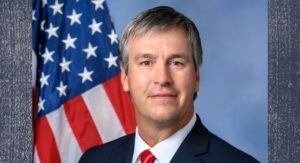AG Steve Marshall joins colleagues to ask Congress to act on drug tied to fentanyl overdoses
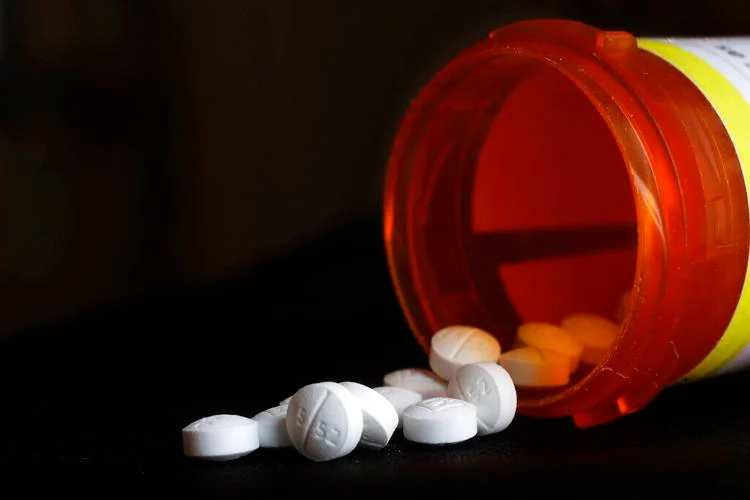
Thirty-nine attorneys general are asking Congress to classify xylazine as a controlled substance for its ties to drug overdoses. Veterinarians use the drug to sedate large animals, but the Drug Enforcement Agency has found it mixed with fentanyl in recent overdose deaths. The largest increase is in the southern states, where overdose deaths linked to xylazine increased 1127% from 116 in 2020 to 1,423 in 2021, according to DEA statistics. The drug is being purchased online by people with no ties to veterinary medicine, the attorneys general said in a letter to Congress. It’s known on the street as “trang” or “zombie drug,” and it slows breathing, heart rate, and blood pressure. The drug is not an opioid, so even when combined with fentanyl, it doesn’t respond to naloxone, which reverses an overdose. The bipartisan group of attorneys general said xylazine is also easy to get. “In a recent intelligence report, the DEA noted, ‘[a] kilogram of xylazine powder can be purchased online from Chinese suppliers with common prices ranging from $6-$20 U.S. dollars per kilogram,’” they said. “Given the low price, the DEA has warned that xylazine’s use as an adulterant for other illicit drugs is growing to allow traffickers to increase their profits.” The DEA updated its public safety alert on the combination of xylazine and fentanyl in November. “Xylazine is making the deadliest drug threat our country has ever faced, fentanyl, even deadlier,” said DEA Administrator Ann Milgram. “DEA has seized xylazine and fentanyl mixtures in 48 of 50 States. The DEA Laboratory System is reporting that in 2022 approximately 23% of fentanyl powder and 7% of fentanyl pills seized by the DEA contained xylazine.” The attorneys general are asking Congress to classify it and all forms of xylazine used illicitly as a Schedule III offense. They also want the DEA to track xylazine’s manufacturing and sales. The U.S. House and Senate introduced bipartisan bills called the “Combating Illicit Xylazine Act.” The House version is assigned to the House Energy and Commerce Subcommittee on Health. The Senate version is assigned to the Judiciary Committee. Republished with the permission of The Center Square.
National Prescription Drug Take Back Day will be on Saturday, October 29

Alabama Attorney General Steve Marshall is urging Alabamians to participate in the DEA National Prescription Drug Take Back Day on Saturday, October 29. The 23rd DEA National Prescription Drug Take Back Day has approximately 60 registered collection sites throughout Alabama scheduled to be available from 10:00 a.m. to 2:00 p.m. on Saturday, October 29. Unused prescription drugs, especially narcotics, are a temptation for persons who are either addicted to drugs or who are seeking a drug experience. Many young people get into drugs or worsen a drug habit through the illicit use of drugs from their parents or grandparents or a neighbor’s medicine cabinet. “With an increasing amount of unused and expired prescription drugs in many homes, it is more important than ever to dispose of them safely and properly,” said AG Marshall. “When old prescription drugs are left in our homes, children may be poisoned or fall prey to drug abuse and addiction. Your old medications can also be a lure to criminals looking for drugs to sell. On Saturday, October 29, please take the opportunity to safely remove these hazards by bringing prescription drugs that are out of date or no longer needed to collection sites across Alabama for safe and proper disposal.” The program is sponsored by the U.S. Drug Enforcement Administration (DEA) to combat the abuse or misuse of potentially dangerous medicines that have expired or are no longer needed. Law enforcement officers will be present at sites throughout Alabama to receive unused prescription drugs for safe and proper disposal. The first Take Back event in Alabama was held in September 2010. Since then, the amount of drugs collected continues to increase. Throughout all of Alabama’s previous DEA National Prescription Drug Take-Back events combined, a total of about 109,671 pounds of unwanted, unused, or expired drugs have been removed and disposed of safely. Law enforcement agencies and interested community partners such as pharmacies, schools, and civic groups are working together to provide local drop-off sites throughout Alabama. If you do not find your area listed on the DEA website, please check with your local law enforcement officials to see if they may be participating in a Take Back event in your community. Deliveries of drugs to DEA National Prescription Drug Take Back Day events are confidential, with no personal information collected and no questions asked. Participants are encouraged to remove labels or black out information beforehand. This is much safer environmentally than pouring unused drugs down the sink. It is important that medicines be disposed of in a proper manner rather than simply being thrown into the trash, flushed away, or poured down drains, as they could contaminate water supplies and cause an environmental hazard. The DEA wrote that the drug overdose epidemic in the United States is a clear and present public health, public safety, and national security threat. DEA’s National Prescription Drug Take Back Day reflects DEA’s commitment to Americans’ safety and health, encouraging the public to remove unneeded medications from their homes as a measure of preventing medication misuse and opioid addiction from ever starting. 108,000 Americans died of drug overdoses in 2021 – the most in history. The DEA believes that we can make our communities safer and healthier, and we can do this by reducing overdoses and overdose deaths. To connect with the author of this story, or to comment, email brandonmreporter@gmail.com.
Halloween warning: Beware rainbow fentanyl pills hidden in candy boxes

From coast to coast – from California to New York, from Texas to Florida – law enforcement officers are warning parents about rainbow fentanyl pills being hidden in candy boxes ahead of Halloween. The pills look like candy but are laced with illicit fentanyl intended to kill children and others who ingest them. Two milligrams, the size of a mosquito, is considered a lethal dose. After a major drug bust at the Los Angeles Airport, LA County Sheriff’s Department issued a warning saying, “With Halloween approaching, parents need to make sure they are checking their kid’s candy and not allowing them to eat anything until it has been inspected by them. “If you find anything in candy boxes that you believe might be narcotics, do not touch it and immediately notify your local law enforcement agency.” The sheriff’s office issued the warning after its Narcotics Bureau detectives and Drug Enforcement Agency (DEA) agents seized approximately 12,000 suspected fentanyl pills hidden inside “Sweetarts,” “Skittles,” and “Whoppers” candy boxes that a passenger was trying to take on a plane at the Los Angeles International Airport. In Tampa on Tuesday, Florida Attorney General Ashley Moody and law enforcement officers warned parents about the dangers of rainbow fentanyl ahead of Halloween. “Halloween can be scary, but nowhere near as scary as rainbow-colored fentanyl that looks like candy and can be lethal in minute doses,” she said. “Whether these drugs are being transported in candy boxes or mixed with other common drugs and sold to unsuspecting users, the threat posed to the safety of kids and young adults is very real. “Just one pill laced with fentanyl can kill, so parents, please talk to your children about the dangers posed by this extremely lethal drug.” Earlier this month, Florida law enforcement officers seized enough fentanyl to kill nearly half of Florida’s population after they shut down a major drug trafficking operation run by gang members affiliated with Mexican cartels. Last month, two Maryland men were charged with fentanyl trafficking offenses after selling illicit pills to undercover DEA agents, the U.S. Attorney for the District of Connecticut said. Investigators confiscated 15,000 fentanyl-laced pills, many of which were hidden inside numerous Nerds candy boxes and Skittles candy bags. Earlier this month, DEA agents seized the largest amount of fentanyl to date in New York City – 15,000 rainbow-colored fentanyl pills hidden in a Lego toy box. Agents said the pills were primarily supplied by two Mexican cartels, the Sinaloa and Jalisco New Generation Cartel. “Using happy colors to make a deadly drug seem fun and harmless is a new low, even for the Mexican cartels,” New York narcotics city prosecutor Bridget Brennan said in a statement. She said more than 80% of drug overdoses in New York City involve illicit fentanyl. Texas Gov. Greg Abbott has designated the two cartels as foreign terrorist organizations and has called on President Joe Biden to do the same. Fentanyl is pouring through the border “because of President Biden’s open border policies,” Abbott said. He’s continued to call on the president to close the border, sounding the alarm on the volume of drugs pouring through. Since the president has been in office, Texas law enforcement working through Operation Lone Star have seized enough lethal doses of fentanyl to kill everyone in the United States. U.S. Customs and Border Protection agents have seized enough lethal doses of fentanyl to kill 5 billion people. The DEA also recently said it had seized 36 million lethal doses of fentanyl in operations from May to September nationwide. Moody and 17 attorneys general have called on the president to classify illicit fentanyl as a weapon of mass destruction. “With massive amounts of fentanyl flooding in from Mexico, we know that deadly drugs are more available,” than they were before, Moody warned. She’s urging parents to talk to their children about how dangerous just one pill is: it can kill. Her office has published a range of resources about the dangers of fentanyl, including a Fast Facts on Fentanyl Toolkit to educate parents about digital drug dealers who are aggressively targeting children and young adults on social media apps. Republished with the permission of The Center Square.
Hill panel probing opioids abuse targets distributor firms
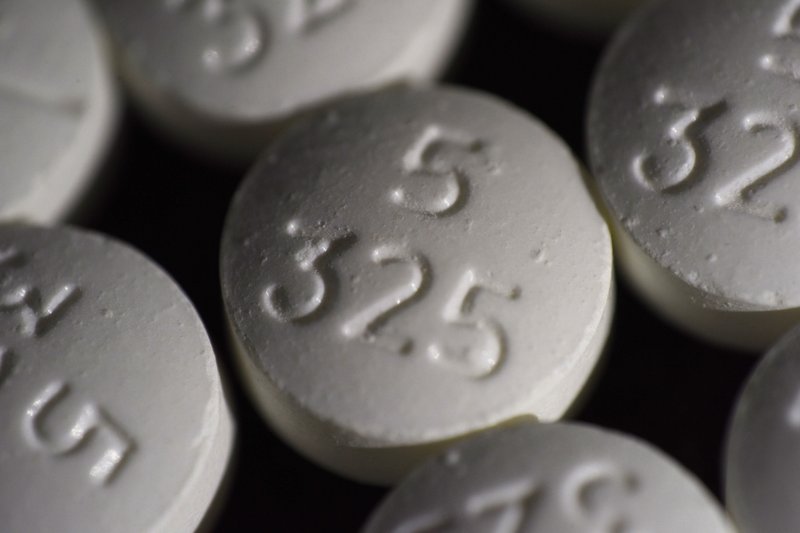
Congressional investigators say wholesale pharmaceutical distributors shipped hundreds of millions of prescription opioid pills to West Virginia, a state disproportionately ravaged by deaths caused by the addictive drugs. Now, lawmakers want executives of those companies to explain how that happened. Current and former officials from five distributor companies are set to give sworn testimony on the subject Tuesday to a House subcommittee. Their appearances come during an election-year push by Congress to pass largely modest legislation aimed at curbing a growing epidemic that saw nearly 64,000 people die last year from drug overdoses, with two-thirds of those deaths involving opioids. The House Energy and Commerce Committee began investigating the distribution of prescription opioids last May. The panel has said distributors sent more than 780 million pills of hydrocodone and oxycodone — prescription pain-killers that have caused many overdose deaths — to West Virginia from 2007 to 2012. That’s an average of more than 400 pills per person over that period in the state, where around 1.8 million people live. Investigators said 20.8 million opioid pills were shipped from 2006 to 2016 to Williamson, population 2,900. One pharmacy in Kermit, with around 400 residents, ranked 22nd in the U.S. in the number of hydrocodone pills it received in 2006, according to the investigation. West Virginia had the nation’s highest drug overdose death rate of 52 per 100,000 in 2016, according to federal figures. Other states with high death rates included Ohio, Pennsylvania and New Hampshire, as well as Washington, D.C. Nearly 12 million people misused opioids in 2016, according to federal figures. Executives slated to testify included top officials from Cardinal Health Inc., AmerisourceBergen Corp. and McKesson Corp., the nation’s three biggest wholesale drug distributors. The executives were appearing before the Energy and Commerce committee’s oversight and investigations subcommittee. The government requires distributors of controlled substances to report suspicious drug orders to the federal Drug Enforcement Administration and to deny questionable transactions. The Trump administration and lawmakers of both parties have been drawing attention to opioids, a range of pain-killing drugs that can be addictive when misused. They include prescription drugs like hydrocodone, oxycodone and codeine, synthetic opioids like fentanyl that can be made illegally, and illegal drugs like heroin. The Energy and Commerce panel has been working on dozens of bills that include encouraging doctors to use non-addictive pain killers, spurring research on such products, broadening access to treatment and giving financial incentives for drug treatment specialists to work in underserved areas. Senate committees are working on their own legislation. The setting was reminiscent of 1994 hearings at which executives of the nation’s tobacco companies testified before the Energy and Commerce panel, then controlled by Democrats. The officials said they didn’t believe cigarettes were addictive, despite evidence to the contrary. Four years later, the industry reached a settlement to pay the states more than $200 billion over 25 years to reimburse them for tobacco-related health care costs. Republished with permission from the Associated Press.
Mobile, Ala. joins the fights against opioid manufacturers
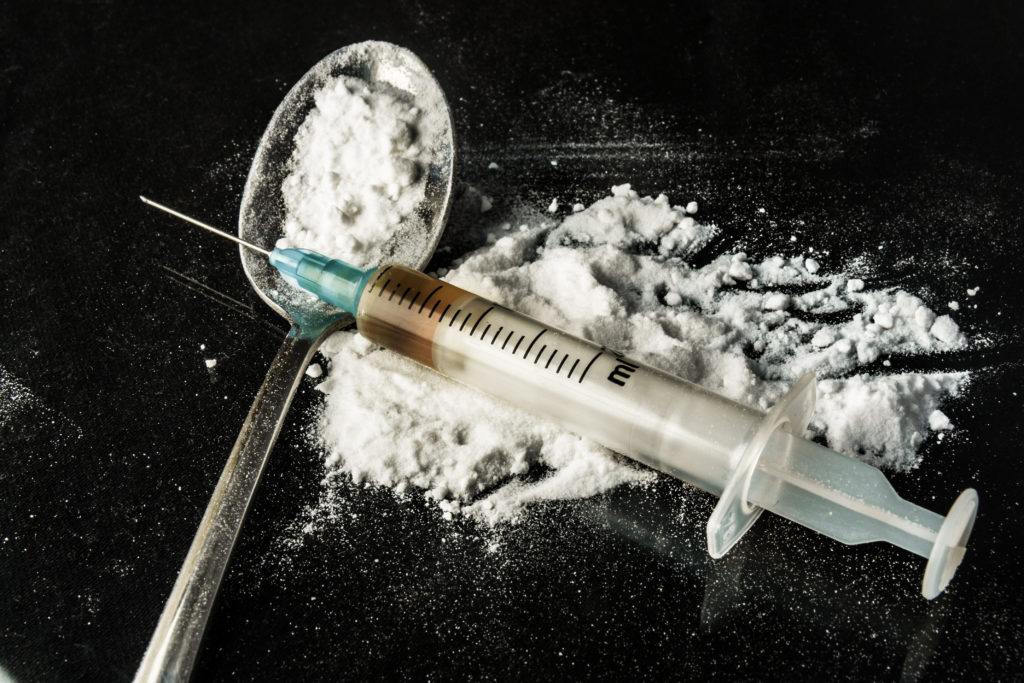
The City of Mobile, Ala. is hoping to hold the companies it says is responsible for dumping millions of dollars’ worth of prescription opiates into the community accountable. On Wednesday, the City joined nationwide public nuisance lawsuit against the pharmaceutical drug manufacturers and wholesale drug distributors that made the opioid epidemic possible. The move ensures the Port City would be entitled to a portion of any potential financial settlement. The suit is against five of the largest manufacturers of prescription opioids and their related companies and against the country’s three largest wholesale drug distributors. The manufacturing companies pushed highly addictive, dangerous opioids and falsely represented to doctors that patients would only rarely succumb to drug addiction. The distributors breached their legal duties to monitor, detect, investigate, refuse and report suspicious orders of prescription opioids. Because prescription opioids are a highly addictive substance, Congress designed a system in 1970 to control the volume of opioid pills being distributed in this country. It let only a select few wholesalers gain the right to deliver opioids. In exchange, those companies agreed to do a very important job – halt suspicious orders and stop control against the diversion of these dangerous drugs to illegitimate uses. But in recent years, they failed to do that and Mobile is now paying the price. The City of Mobile is working with a consortium of law firms to hold pharmaceutical drug manufacturers and wholesale distributors accountable for failing to do what they were charged with doing under the federal Controlled Substances Act – monitor, identify and report suspicious activity in the size and frequency of opioid shipments to pharmacies and hospitals. “Homes have been broken and families torn apart by this epidemic, which has claimed victims from all walks of life,” said Mayor Sandy Stimpson. “The pharmaceutical drug manufacturers and wholesale drug distributors failed in their legal obligation to notify the Drug Enforcement Administration of suspicious orders, even as the number of pills flowing into our city rose and rose.” The city has hired expert law firms experienced in holding the powerful pharmaceutical industry accountable. Those firms include: Levin, Papantonio, Thomas, Mitchell, Rafferty & Proctor; Baron & Budd; Greene Ketchum Bailey Farrell & Tweel; Hill, Peterson, Carper, Bee & Deitzler; McHugh Fuller Law Group; Taylor Martino, P.C.; Zarzaur Mujumdar & DeBrosse; Jinks, Crow & Dickson, P.C.; Lloyd & Hogan; The Frankowski Firm, LLC; Cusimano, Roberts, & Mills; and Rogers Law Group, PA. The citizens of Mobile continue to bear the burden of the cost of the epidemic, as the costs of treatment for addiction, education and law enforcement have continued to rise. Funds recovered through a winning lawsuit would be used to assist the city in maximizing resources in overcoming the opioid epidemic. Birmingham, Ala. and several other Alabama cities have also joined the suit.
Feds investigate dozens of thefts of opioids, other drugs at VA facilities
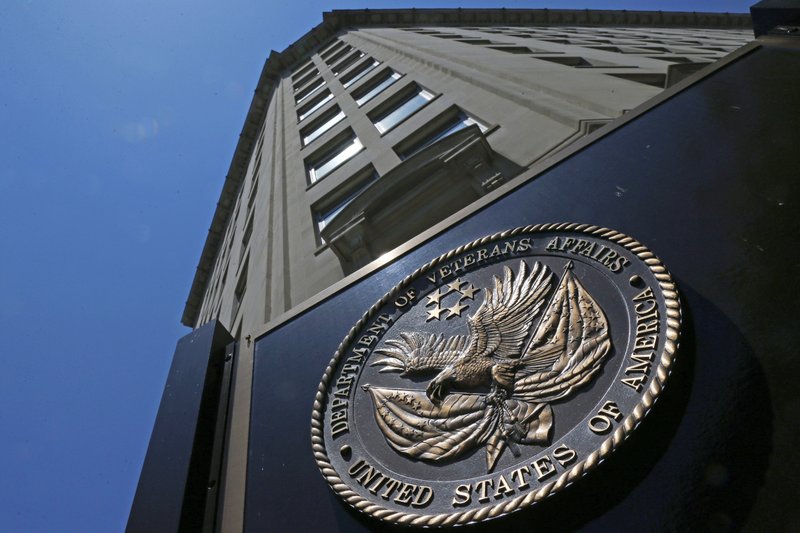
Federal authorities are investigating dozens of new cases of possible opioid and other drug theft by employees at Veterans Affairs hospitals, a sign the problem isn’t going away as more prescriptions disappear. Data obtained by The Associated Press show 36 criminal investigations opened by the VA inspector general’s office from Oct. 1 through May 19. It brings the total number of open criminal cases to 108 involving theft or unauthorized drug use. Most of those probes typically lead to criminal charges. The numbers are an increase from a similar period in the previous year. The VA has pledged “zero tolerance” in drug thefts following an AP story in February about a sharp rise in reported cases of stolen or missing drugs at the VA since 2009. Doctors, nurses or pharmacy staff in the VA’s network of more than 160 medical centers and 1,000 clinics are suspected of siphoning away controlled substances for their own use or street sale – sometimes to the harm of patients – or drugs simply vanished without explanation. Drug thefts are a growing problem at private hospitals as well as the government-run VA as the illegal use of opioids has increased in the United States. But separate data from the Drug Enforcement Administration obtained by the AP under the Freedom of Information Act show the rate of reported missing drugs at VA health facilities was more than double that of the private sector. DEA investigators cited in part a larger quantity of drugs kept in stock at the bigger VA medical centers to treat a higher volume of patients, both outpatient and inpatient, and for distribution of prescriptions by mail. Sen. Marco Rubio, R-Fla., said AP’s findings were “troubling.” He urged Congress to pass bipartisan accountability legislation he was co-sponsoring that would give the agency “the tools needed to dismiss employees engaged in misconduct.” The Senate is set to vote on the bill June 6. “The theft and misuse of prescription drugs, including opioids, by some VA employees is a good example of why we need greater accountability at the VA,” Rubio said. In February, the VA announced efforts to combat drug thefts, including employee drug tests and added inspections. Top VA officials in Washington led by VA Secretary David Shulkin pledged to be more active, holding conference calls with health facilities to develop plans and reviewing data to flag problems. The department said it would consider more internal audits. Criminal investigators said it was hard to say whether new safeguards are helping. “Prescription drug diversion is a multifaceted, egregious health care issue,” said Jeffrey Hughes, the acting VA assistant inspector general for investigations. “Veterans may be denied necessary medications or their proper dosage and medical records may contain false information to hide the diversion, further putting veterans’ health at risk.” Responding, the VA said it was working to develop additional policies “to improve drug safety and reduce drug theft and diversion across the entire health care system.” “We have security protocols in place and will continue to work hard to improve it,” Poonam Alaigh, VA’s acting undersecretary for health, told the AP. In one case, a registered nurse in the Spinal Cord Injury Ward at the VA medical center in Richmond, Virginia, was recently sentenced after admitting to stealing oxycodone tablets and fentanyl patches from VA medication dispensers. The nurse said she would sometimes shortchange the amount of pain medication prescribed to patients, taking the remainder to satisfy her addiction. Hughes cited in particular the risk of patient harm. “Health care providers who divert for personal use may be providing care while under the influence of narcotics,” he said. AP’s story in February had figures documenting the sharp rise in drug thefts at federal hospitals, most of them VA facilities. Subsequently released DEA data provide more specific details of the problem at the VA. Drug losses or theft increased from 237 in 2009 to 2,844 in 2015, before dipping to 2,397 last year. In only about 3 percent of those cases have doctors, nurses or pharmacy employees been disciplined, according to VA data. At private hospitals, reported drug losses or theft also rose – from 2,023 in 2009 to 3,185 in 2015, before falling slightly to 3,154 last year. There is a bigger pool of private U.S. hospitals, at least 4,369, according to the American Hospital Association. That means the rate of drug loss or theft is lower than VA’s. The VA inspector general’s office said it had opened 25 cases in the first half of the budget year that began Oct. 1. That is up from 21 in the same period in 2016. The IG’s office said the number of newly opened criminal probes had previously been declining since 2014. Michael Glavin, an IT specialist at the VA, says he’s heard numerous employee complaints of faulty VA technical systems that track drug inventories, leading to errors and months of delays in identifying when drugs go missing. Prescription drug shipments aren’t always fully inventoried when they arrive at a VA facility, he said, making it difficult to determine if a drug was missing upon arrival or stolen later. “It’s still the same process,” said Glavin, who heads the local union at the VA medical center in Columbia, Missouri. The union’s attorney, Natalie Khawam, says whistleblowers at other VA hospitals have made similar complaints. Criminal investigators stressed the need for a continuing drug prevention effort. The VA points to inventory checks every 72 hours and “double lock and key access” to drugs. It attributes many drug loss cases to reasons other than employee theft, such as drugs lost in transit. But the DEA says some of those cases may be wrongly classified. “Inventories are always an issue as to who’s watching or checking it,” said Tom Prevoznik, a DEA deputy chief of pharmaceutical investigations. “What are the employees doing, and who’s watching them?” Republished with permission of The Associated Press.


